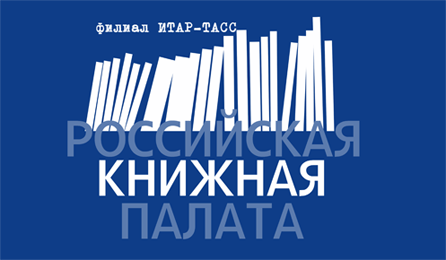Gusakov T. Yu. Agrarian alternative for Yamal: Agriculture and indigenous population // The Russian Peasant Studies. 2022. V.7. №3. P. 106-150.
DOI: 10.22394/2500-1809-2022-7-3-106-150
Annotation
The current social-economic situation in Russia poses new challenges for industries, agriculture, and services. One of these challenges is the search for alternative sources of food supply in regions and the strengthening of food security under the import substitution policy. In agriculture, the emphasis is placed on the development of both main branches and those previously considered additional. At the same time, there are attempts to diversify economies of the single-industry regions in order to ensure their ‘sustainable’ development. One of the regions representing all the above trends is the Yamalo-Nenets Autonomous Region. Federal and regional authorities strive to reduce its budget dependence on the oil and gas rent and to invest in the traditional sectors of polar agriculture such as reindeer breeding and fishery. The article is based on the results of the author’s field studies in the summer of 2021 and describes the social-economic situation in Yamal. The author pays particular attention to agriculture and indigenous peoples of Siberia, to the history and main trends in the development of the nomadic and semi-nomadic groups of Yamal — to identify promising directions and main barriers for the development of regional agriculture.
Keywords
Regional development, human geography, Siberian indigenous nations, migration, oil-producing regions, agriculture, reindeer breeding.
About the author
Gusakov Timur Yu., Researcher, Center for Agrarian Studies, Russian Presidential Academy of National Economy and Public Administration; Vernadskogo Prosp., 82, Moscow, 119571, Russia.
E-mail: This email address is being protected from spambots. You need JavaScript enabled to view it.
Gusakov T. Yu. Gypsies in the post-Soviet Crimea: Migration and integration // The Russian Peasant Studies. 2022. V.7. №1. P. 146-170.
DOI: 10.22394/2500-1809-2022-7-1-146-170
Annotation
Throughout the history of the state, marginal groups have been a challenge for its effective functioning and development. One of the most widespread and numerous marginal groups in the world is an ethnic group of Gypsies. For many centuries, they live with other peoples but remain cut off from the state and its social institutions. However, under globalization and the Gypsy emancipation, the situation is changing. In some countries, social stigmatization and discrimination of the Gypsies still exclude them from social processes, but there are cases of their successful social integration (for example, in post-Soviet countries). The article considers the current situation of the Gypsies on the Crimean Peninsula, reasons for their social isolation, and features of their interaction with the society. The author also analyzes the Gypsy migrations in the region, factors of their resettlement, and features of their social-economic integration into the Crimean society.
Keywords
Gypsies (Roma), migration, sedentarization, nomadic lifestyle, social stratification.
About the author
Gusakov Timur Yu., Researcher, Center for Agrarian Studies, Russian Presidential Academy of National Economy and Public Administration. 119571, Moscow, Vernadsky Prosp., 82.
E-mail: This email address is being protected from spambots. You need JavaScript enabled to view it.
Migrations as the main factor in the transformation of the settlement system of the Crimean Peninsula
Aug 07 2021Gusakov T.Yu. Migrations as the main factor in the transformation of the settlement system of the Crimean Peninsula // The Russian Peasant Studies. 2021. V.6. №2. P. 99-120.
DOI: 10.22394/2500-1809-2021-6-2-99-120
Annotation
For centuries, people have been moving from place to place for a variety of reasons, which created both permanent and temporary population of the entire habitable space. Due to these migrations, settlements appear and disappear —auls, villages, towns, cities, megapolises, etc. Moreover, migrations create a settlement system of a certain territory, which is gradually transforming. And since each territory has its own features of the social-economic development, the patterns of settlement systems also differ by region. The article considers the evolution of the settlement system of the Crimean Peninsula under the influence of migrations. The settlement systems are compared and analyzed based on the models of the settlement network for different years, which allows to assess the impact of migrations at different stages of the historical development. Over the past 250 years, the settlement system of the Crimean Peninsula has undergone significant changes: from small settlements with foci of animal husbandry—to the medium-sized and in some places large settlements. The author identifies the main stages in the transformation of the settlement network of the Crimean Peninsula and analyzes the development trajectories of some types of settlements.
Keywords
Geography of rural areas, migrations, rural areas, resettlement, rural resettlement, settlement network, geo-information systems.
About the author
Gusakov Timur Yu., Researcher, Center for Agrarian Studies and Center for Prospective Sociological Research, Russian Presidential Academy of National Economy and Public Administration; PhD Student, Geographical Faculty, Lomonosov Moscow State University. 119571, Moscow, Vernadskogo Prosp., 82.
E-mail: This email address is being protected from spambots. You need JavaScript enabled to view it.
Gusakov T.Yu. Rural Crimea and its agroholdings // The Russian Peasant Studies. 2020. V.5. №2. P. 106-129.
DOI: 10.22394/2500-1809-2020-5-2-106-129
Annotation
The increase in number of agroholdings in the Russian regions changes the paths of rural development and attracts the scientific interest to interaction of business groups with the authorities and local communities. Concentration of agricultural production in the hands of large companies has regional peculiarities determined by the level of integration: there are regions with a high share of holdings in the structure of agricultural production (for example, the Belgorod and Voronezh Regions) and, on the contrary, regions with a high share of agricultural production in households (Dagestan, Crimea, Tuva). The article considers the Republic of Crimea as a participant of the emerging holding structure of the agricultural production, but the increase in the share of agricultural enterprises is accompanied by the dominance of the informal household economy. The author also considers the influence of agroholdings on the development of rural territories and agricultural production on the example of the largest Crimean producer of agricultural products.
Keywords
agriculture, rural area, agroholding, rural development, integrated business group, Republic of Crimea
About the author
Gusakov Timur Yu., Junior Researcher, Center for Agrarian Studies, Russian Presidential Academy of National Economy and Public Administration. Vernadskogo Prosp., 82, Moscow, 119571.
E-mail: This email address is being protected from spambots. You need JavaScript enabled to view it.
Gusakov T.Yu. The multistructure of the contemporary ethnic region in Russia: Archaization, agrarianization and migration (on the example of the Republic of Tyva) // The Russian Peasant Studies. 2019. V.4. №4. P. 76-95.
DOI: 10.22394/2500-1809-2019-4-4-76-95
Annotation
The article considers the features of the contemporary rural development of the Russian ethnic region on the example of the Republic of Tyva. In 2017, according to the official statistics, it was the poorest Russian region by the share of the rural population below the poverty line. This situation was determined by a number of factors exacerbating Tuva’s economic depression: its being a periphery and its remoteness from economic centers, stagnation and impossibility to revitalize the industrial complex, destruction of the agricultural sector, a high share of the shadow economy, and so on. The reason for the economic stagnation is the agrarian path of Tyva chosen by the regional elites, which consists of the support for small archaic agricultural production as an ethnic type of activity. The article describes the vectors of the contemporary rural development of the Republic of Tyva, its economic and ethnic-social features, and changes determined by the large transfers from the federal budget to the regional economy. Today, there is spatial polarization and rural depopulation in the depressed agrarian regions, and the cities remain the main centers of population concentration (mainly the city of Kyzyl).
Keywords
agriculture, rural settlement, ethnic region, migration, spatial mobility, Republic of Tyva
About the author
Gusakov Timur Yu., Junior Researcher, Center for Agrarian Studies, Russian Presidential Academy of National Economy and Public Administration. 119571, Moscow, Vernadskogo Prosp., 82.
E-mail: This email address is being protected from spambots. You need JavaScript enabled to view it.
Gusakov T.Yu. Municipal reform of 2015 in Ukraine: Implementation and first results // The Russian Peasant Studies. 2019. V.4. №2. P. 138-159.
DOI: 10.22394/2500-1809-2019-4-2-138-159
Annotation
Local self-government is a structuring element of the institutional environment; thus, its functioning determines the development of territories. The trend of municipal reforming appeared in the countries of Western Europe as early as the mid-1970s due to the general federalization and the empowerment of local authorities. Later similar reforms began in the post-Soviet countries. In 2015, Ukraine adopted the Conception of reforming local self-government and territorial organization of power. According to this Conception, the hierarchy of state power was to be optimized and a new administrative-territorial structure reflecting the contemporary system of social and economic relations in the regions of Ukraine was to be formed. The article considers the evolution of the administrative-territorial and municipal structure of the Ukrainian regions, analyzes the international experience of the reform, and identifies the essence of the municipal reform of 2015 highlighting its strengths and weaknesses.
Keywords
local self-government, local authorities, municipal reform, state administration, system of management, community, institutional environment
About the author
Gusakov Timur Yu., Junior Researcher, Center for Agrarian Studies, Russian Presidential Academy of National Economy and Public Administration. 119571, Moscow, Vernadskogo Prosp., 82.
E-mail: This email address is being protected from spambots. You need JavaScript enabled to view it.
Gusakov T.Yu. Rural informal economy of the Crimean village Novoalekseevka // The Russian Peasant Studies. 2017. V.2. №4. P. 107-129.
DOI: 10.22394/2500-1809-2017-2-4-107-129
Annotation
The article considers the situation in the Crimean village as a result of the dynamic development of informal economy in the 1990s after the collapse of the Soviet Union. The author tries to adapt the existing classifications of informal economy to the specific features of rural Crimea, in which informal relations are primarily determined by the exogenous forces such as the return of deported peoples, the collapse of the collective farms system and peculiarities of the Ukrainian state building. The Crimean countryside became a hostage of the social-economic transformations of the post-Soviet period, and found the only way to adapt and survive under the “wild capitalism” in the refusal to follow the rules of ineffective formal institutions and in replacing them with informal ones.
“Self-reliance” became the main slogan of the Crimean village in the ‘dashing 1990s’. Ethnic, ideological and intercultural disagreements and a lack of trust determined a new model of coexistence of rural residents — a commonalty (an analogue of the pre-revolutionary rural community) constituted by a network of informal ties. Combinations of various mental features determine specific types of informal economy such as a traditional shift to trade and agriculture due to the available resource base. Transformations of the institutional environment and social-economic stabilization in the 2000s contributed to the reduction of informal sector in the rural economy of the Crimea.
Keywords
Crimea, countryside, informal economy, shadow economy, agriculture, peasantization, commonalty
About the author
Gusakov Timur Yu., Junior Researcher, Center for Agrarian Studies, Russian Presidential Academy of National Economy and Public Administration. 119571, Moscow, Prosp. Vernadskogo, 82.
E-mail: This email address is being protected from spambots. You need JavaScript enabled to view it.





















